Use Northumbria University’s STEM Person of the Week resources to focus on scientists’ attributes that learners can relate and aspire to
The careers that children and young people think they’d like to have tend to fall into a fairly narrow range. They usually aspire to jobs they see people doing around them or on social media and TV. Some roles such as those in sports and the performing arts are persistently popular. While others go through phases – remember the popularity of forensics thanks to CSI: Crime Scene Investigation? One goal of careers information, advice and guidance is to help young people find out about different careers and educational pathways to reach those careers. Using different careers as a context for subject teaching is a helpful way to broaden students’ knowledge of careers in that subject and their aspirations.
Role models from similar backgrounds to students are particularly motivating
However, just knowing about different jobs isn’t always enough to encourage students to see themselves as someone who might do that role. If we ask a student ‘Would you like to be an analytical development technician?’ they will probably say no because they have other career goals in mind. Their career idea might not be realistic, but for them it is real, so why would they want to aspire to do a different job, especially if they don’t know what it involves?
Open eyes and doors
Introduce role models to give students a better understanding of different scientific jobs. You can give students an insight into science, technology, engineering and mathematics (STEM) careers by showing them people who are doing those roles. A Future in Chemistry job profiles from the Royal Society of Chemistry (RSC) and STEM Learning’s Ambassadors Programme supporting working scientists to visit schools and colleges are two great examples.
Download and print
Display A Future in Chemistry profiles of real-life chemists in your classroom to spark your students’ interests and demonstrate how they can make a difference to the world with chemistry.
A journal review looking at the effectiveness of different role model activities on young people’s motivations and aspirations for STEM careers recommended role models should be competent and successful, and that success should be attainable, otherwise they could demotivate young people. The role models don’t need to be Nobel prize winners, they just have to be OK at their jobs. Role models from similar backgrounds to students are particularly motivating and those from underrepresented groups have the broadest positive effects on all students, regardless of the students’ own backgrounds.
Introduce role models (rsc.li/3zKWcNS) to give students a better understanding of different scientific jobs. You can give students an insight into science, technology, engineering and mathematics (STEM) careers by showing them people who are doing those roles. The Royal Society of Chemistry’s (RSC) A Future in Chemistry online job profiles (rsc.li/4cCAlXs) and the STEM Learning’s Ambassadors Programme (bit.ly/3S2GKTg), which supports working scientists to visit schools and colleges, are two great examples.
A journal review (bit.ly/4cBdETg) looking at the effectiveness of different role model activities on young people’s motivations and aspirations for STEM careers recommended role models should be competent and successful, and that success should be attainable, otherwise they could demotivate young people. The role models don’t need to be Nobel prize winners, they just have to be OK at their jobs. Role models from similar backgrounds to students are particularly motivating and those from underrepresented groups have the broadest positive effects on all students, regardless of the students’ own backgrounds.
Focus on attributes
At NUSTEM – an outreach and research group at Northumbria University – we have developed STEM Person of the Week resources that address the need to portray role models as meaningfully similar to students. These resources are sets of printable posters and postcards with each set highlighting five different STEM people. The idea is to use one poster per week in the classroom over a five-week period. The resources focus on the attributes – or employability skills – of each of the role models. The attributes highlighted are those employers particularly value and those that help the role models to be successful in their chosen careers. Examples include being collaborative, resilient and open-minded.
At NUSTEM – an outreach and research group at Northumbria University – we have developed STEM Person of the Week resources (bit.ly/4bLpG8E) that address the need to portray role models as meaningfully similar to students. These resources are sets of printable posters and postcards with each set highlighting five different STEM people. The idea is to use one poster per week in the classroom over a five-week period. The resources focus on the attributes – or employability skills – of each of the role models. The attributes highlighted are those employers particularly value and those that help the role models to be successful in their chosen careers. Examples include being collaborative, resilient and open-minded.
In these resources, we focus on attributes because they provide a way for students to find things they have in common with the STEM role models. Students may consider themselves curious or remember a time when they’ve been hard-working, too. This helps them to think: ‘That person is like me so I could do that job if I wanted to’. The accompanying presentation with each poster contains a simple reflection task to help students match their attributes with those of the role model. Use this reflection as a five-minute lesson starter to help focus students or at the end of a lesson to help them review what attributes they have shown during that lesson. Some teachers, for example, have then used the weekly attributes to praise students after practicals to highlight they have seen them being observant, organised or collaborative.
In your class
- Integrate the STEM Person of the Week resources as a starter or end of lesson reflection.
- Highlight role models that are competent and successful, and show learners that success is attainable.
- Share posters of people from similar backgrounds to students to motivate them.
- Focus on the scientists’ attributes – employability skills – that help them to be successful in their chosen careers and learners may have in common.
We’ve also found that students think about where they have used the attributes outside of school. This can help teachers get to know more about them and to bridge the gap between students’ lives in and out of the classroom.
In May 2024, with support from an RSC Chemistry for All outreach grant, we released two sets of chemistry-focused STEM Person of the Week resources. One set includes profiles of a medical chemist, a research and development technician and a lecturer. Chemists featured in the other set include an analytical development placement student, a dentist and an apprentice laboratory technician.
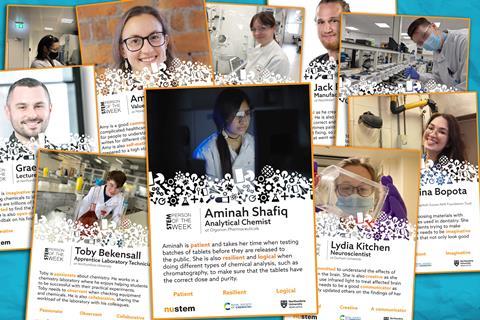
A study into the effectiveness of the STEM Person of the Week programme found that students were still talking about people who work in STEM using fewer stereotypes a year after the intervention.





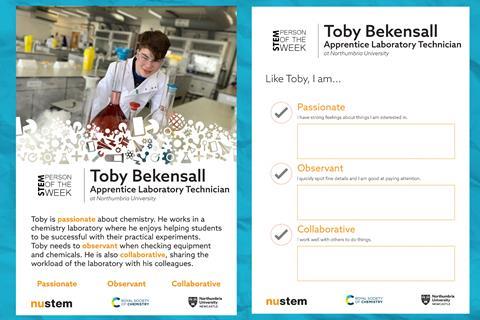
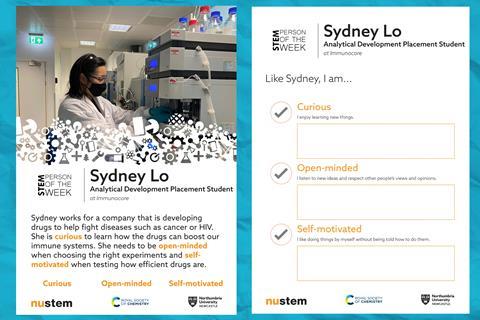
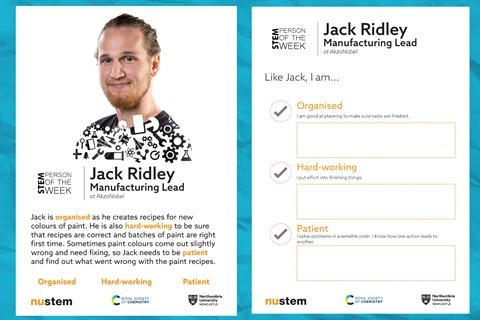
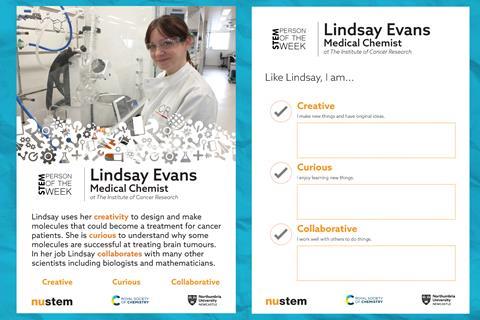
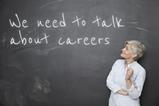

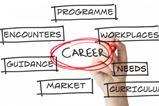






No comments yet